-
Petrus wine aged in space to go on sale at Christie’s for possible $1million08th May ,2021A bottle of Petrus 2000 that spent more than a year in space orbiting the earth is set to be offered for sale by Christie’s, the auction house has announced.The bespoke case up for sale includes both .....read more
A bottle of Petrus 2000 that spent more than a year in space orbiting the earth is set to be offered for sale by Christie’s, the auction house has announced.
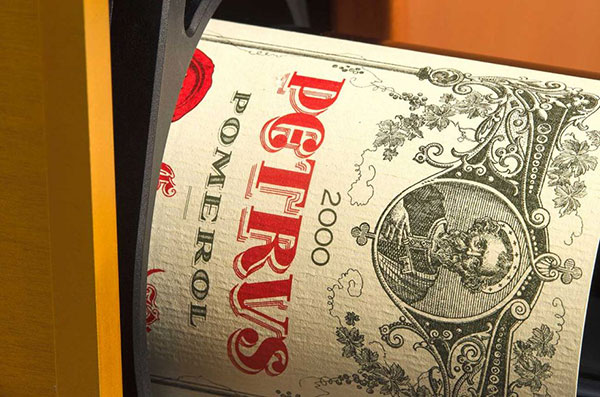
The bespoke case up for sale includes both Petrus space and earth-aged wines. Credit: Christie's Images Ltd 2021.
News Home
Collectors will be given the chance to obtain Petrus 2000 ‘space wine’ after Christie’s announced it would be offering a bottle via private sale.A Christie’s spokesperson confirmed the estimated sale price was in the region of $1m (£720,000).
As part of the deal, the buyer will also get a bottle of ‘terrestrial’ Petrus 2000 and a corkscrew ‘made from a meteorite’, as well as a decanter and glasses, Christie’s said today (4 May).
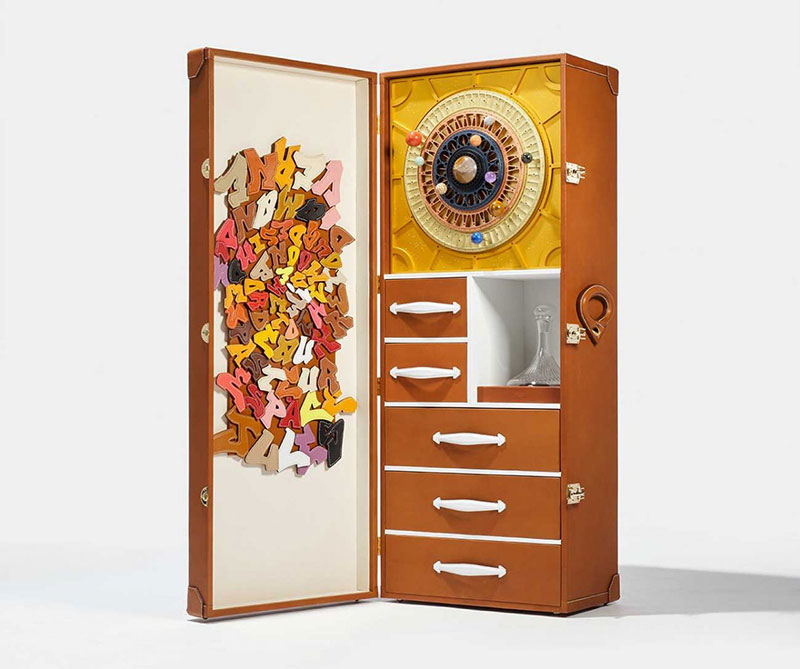
The bespoke case designed by Les Ateliers Victor in Paris. Photo credit: Christie’s Images Ltd 2021.
The space wine also comes packaged in a special trunk made by Les Ateliers Victor in Paris; the result of more than 900 hours work and designed to include a ‘secret vault hidden behind a solar system inspired by Jules Verne’, according to Les Ateliers Victor’s CEO, Benoît Miniou.
Petrus 2000 in space
Twelve bottles of Petrus 2000 recently spent 440 days in space, the equivalent of 300 trips to the Moon.
They were blasted into orbit and stored for 14 months at the International Space Station as part of a wider research project led by Space Cargo Unlimited.
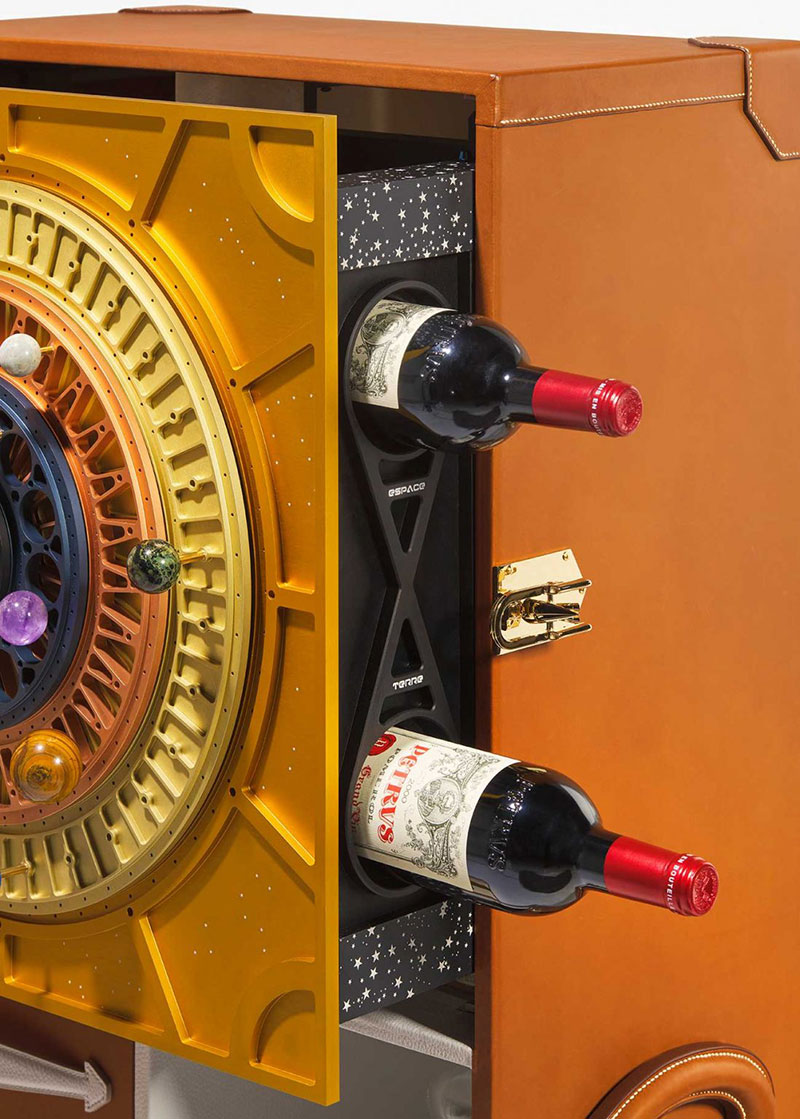
The wines to be sold by Christie’s are housed in a ‘secret vault’ in the case…Photo credit: Christie’s Images Ltd 2021.
A select group of tasters, including Decanter’s Jane Anson, recently compared the space wines to control samples that remained on earth at an event held by the University of Bordeaux’s wine institute, the ISVV.
Tasters found slight yet clear differences in the wines’ character, according to an official report.
‘From previous experience of this wine, this particular bottle seems more evolved than I would expect from a 21-year-old bottle of Petrus 2000,’ said Anson of the space-aged Petrus 2000.
‘It is beautiful and nuanced, with fine tannins and a sense of energy, but has a clear difference in expression from the [earth] wine.’ Anson rated both samples 98 points.
Sale proceeds to fund ‘future missions’
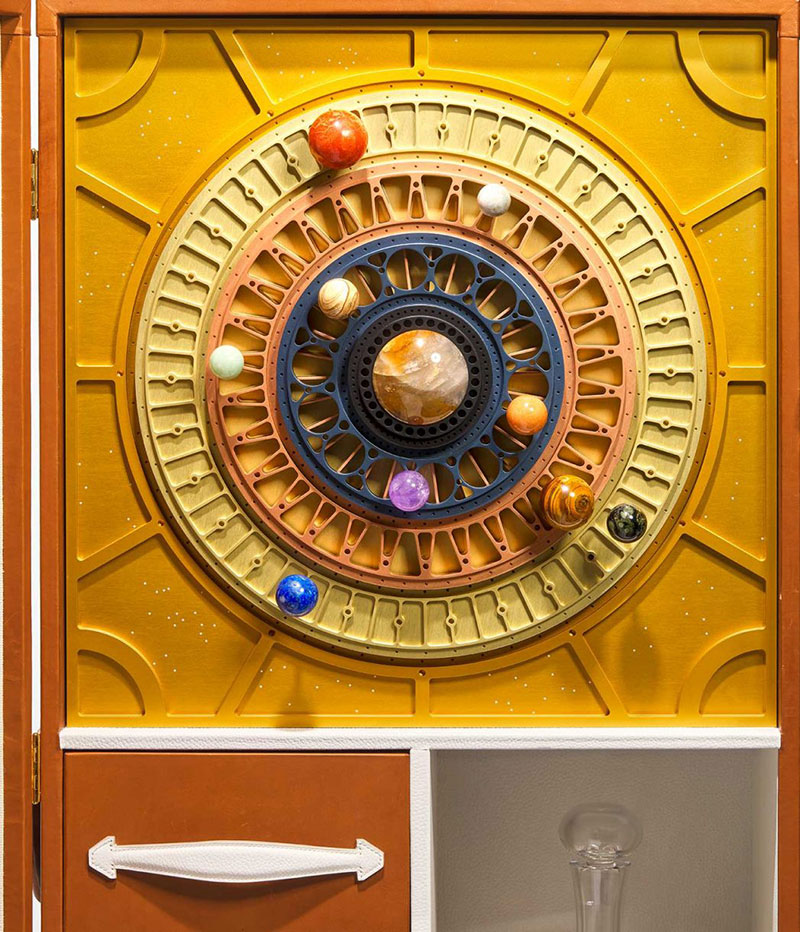
The ‘solar system’ design on the bespoke case housing the wines. Photo credit: Christie’s Images Ltd 2021.
Christie’s said proceeds from its sale will go towards funding future space missions.
‘This bottle of Petrus 2000 marks a momentous step in the pursuit of developing and gaining a greater understanding of the maturation of wine,’ said Tim Triptree MW, international director of Christie’s wine and spirits department.
‘Christie’s is delighted to bring this first of its kind bottle to the market and to support Space Cargo Unlimited to continue their research into the future of agricultural practices.’
Nicolas Gaume, cofounder and CEO of Space Cargo Unlimited, said, ‘The proceeds of the sale will allow us to continue Mission WISE, six experiments in space to help invent the agriculture and food we need for tomorrow on Earth.’
-
Napa’s Hundred Acre expands distribution in Malaysia11th May ,2020Hundred Acre winery has appointed Bordeaux Liquid Gold as its exclusive importer and agent in Malaysia.Napa winery Hundred Acre is entering its 20th year, Throughout the lasts two decades, it has set .....read more
Hundred Acre winery has appointed Bordeaux Liquid Gold as its exclusive importer and agent in Malaysia.
Napa winery Hundred Acre is entering its 20th year, Throughout the lasts two decades, it has set foot in different markets around the world, and from this month, will be expanding to Malaysia thanks to a new partnership with Bordeaux Liquid Gold.
Bordeaux Liquid Gold is the official distributor of Petrus, Château Lafleur Pomerol, Billecart Salmon, among others, with the business primarily focused on the representation of some of the great châteaux of Bordeaux across Malaysia. It is one of the biggest Bordeaux en primeur buyers in South East Asia, with clients based in Singapore, China, Hong Kong, Vietnam, and Malaysia.
Landon Patterson, vice president of sales and global allocations manager of Hundred Acre, said: “Southeast Asia is one of the most exciting wine and food scenes in the world and the buzz for wines from California has been building for many years.
“We have long heard from many of our Malaysian clients that they wanted the opportunity to drink Hundred Acre in the spectacular restaurants and hotels of their home country. We are excited that we can now make that a reality working with such a passionate and professional group like Bordeaux Liquid Gold.”
Julian Poh, chief executive officer of Bordeaux Liquid Gold, added: “It’s a tremendous honour and responsibility to represent Hundred Acre wines in Malaysia. To have a winery that has achieved 22 perfect 100 point scores epitomises our mission at Bordeaux Liquid Gold of bringing the very best wines in the world to our clients.”
According to the winery, exports to Malaysia will begin over the next few months.
-
An Indelible Wine Dinner By The Illustrious Château Margaux At Sabayon, EQ08th Jan ,2020By Samantha LimDecember 26, 2019Lauded by presidents (Thomas Jefferson) and poets (Edgar Allan Poe), referenced in pop culture (The Office, Mad Men), and drunk by real and fictional heroes (Steve Jobs.....read more
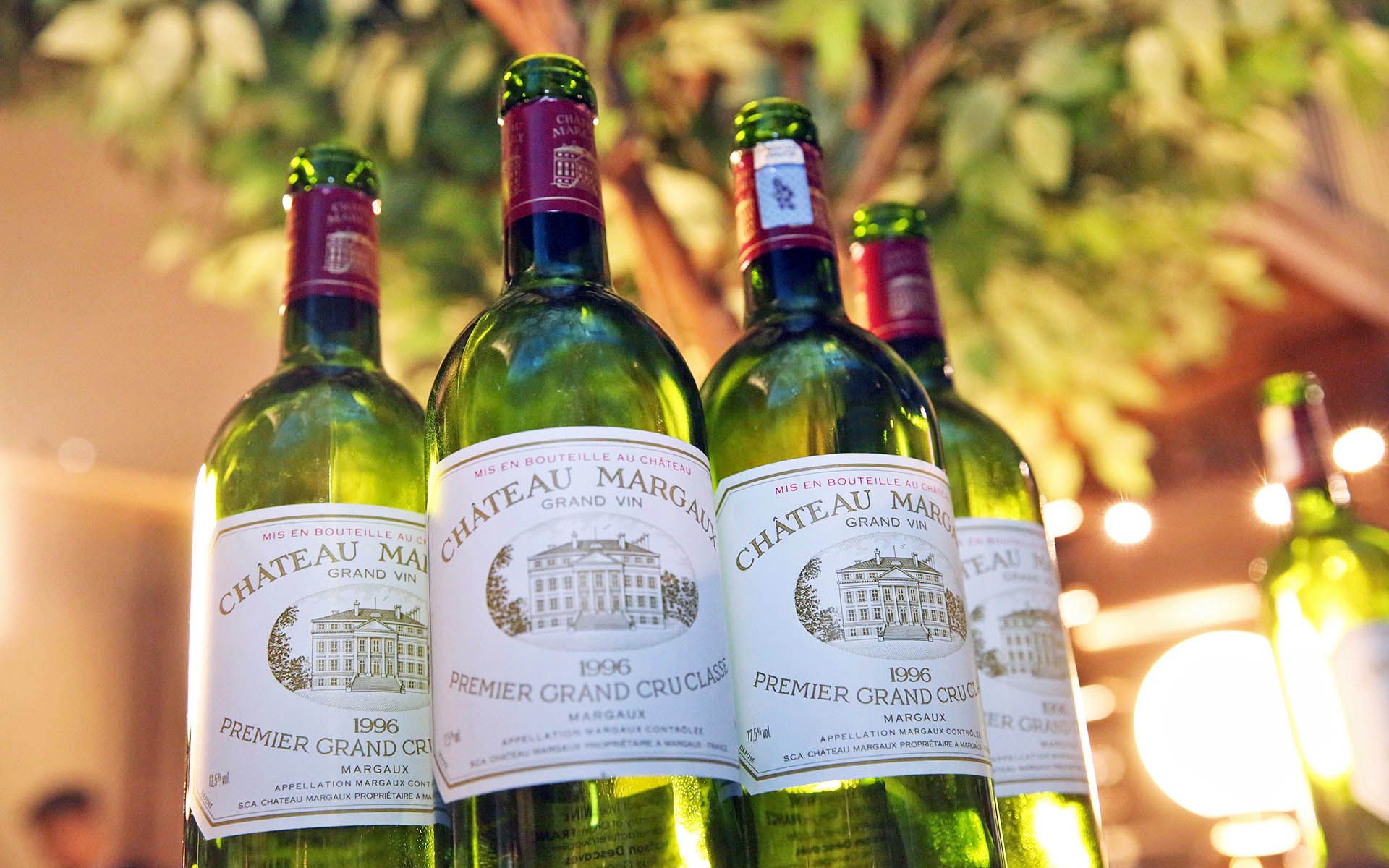
By Samantha Lim
December 26, 2019Lauded by presidents (Thomas Jefferson) and poets (Edgar Allan Poe), referenced in pop culture (The Office, Mad Men), and drunk by real and fictional heroes (Steve Jobs, Batman), cult wine Château Margaux is served throughout a 6-course meal orchestrated by Bordeaux Liquid Gold and EQ Hotel.
By a stroke of luck, our placard places us next to Aurélien Valance, deputy general manager of the eminent estate, thus permitting the following dialogue to flow:
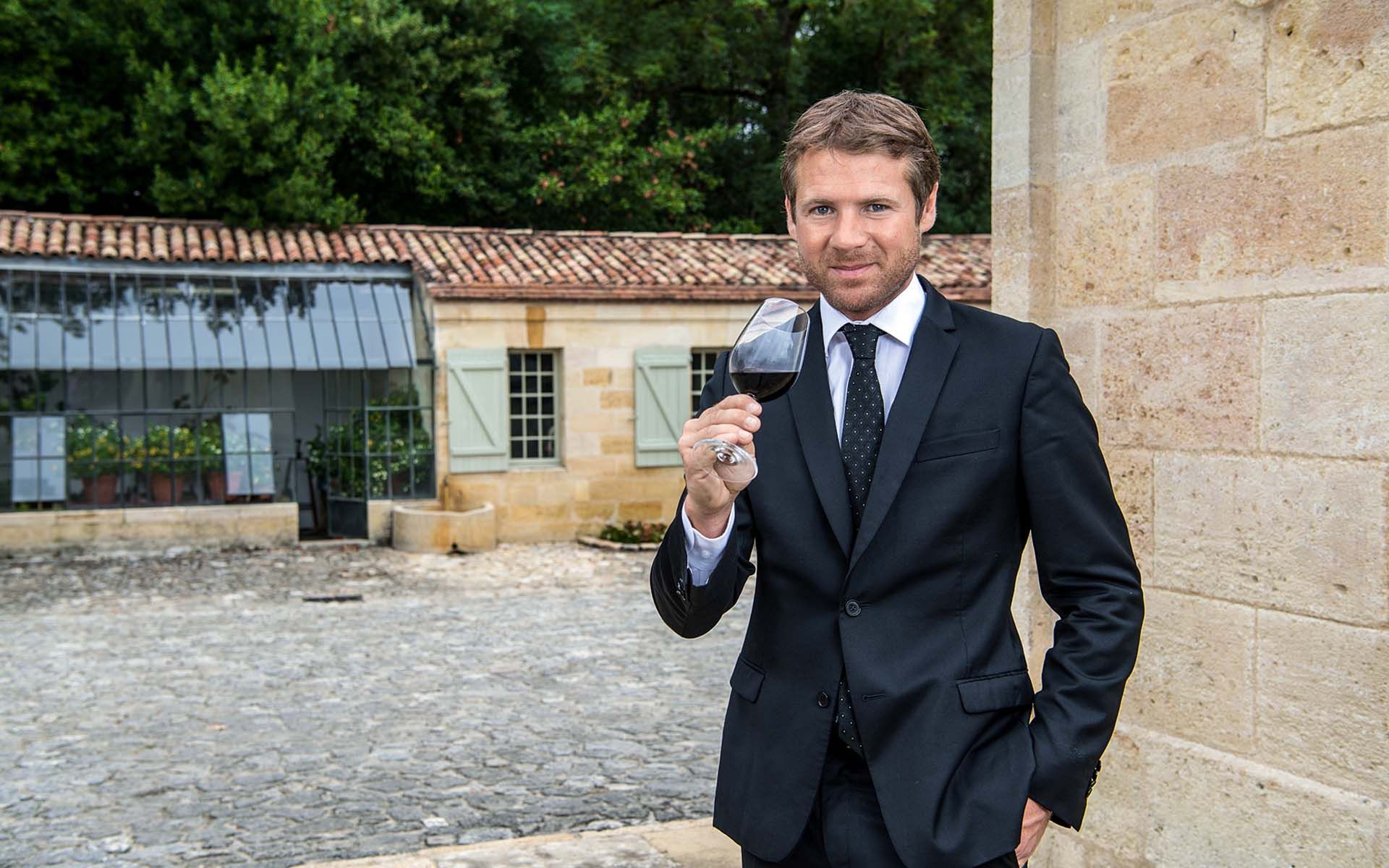
Aurélien Valance. Photo: Corinne MentzelopoulosThat’s quite a stern portrait of you in Château Margaux’s information satchel, Monsieur Valance.
There were many, but Corinne Mentzelopoulos, the current owner of Château Margaux, chose this one. She took the photo herself.
Perhaps that’s how she sees you.
*Laughs.* Perhaps!
What is Madame Mentzelopoulos like? For someone who took the reigns from her father, she must be iron-willed. But her love for photography divulges a poetic side.
She has four passions: photography, reading, literature and the arts, and lastly, dogs,
Does Château Margaux have an heir or heirs?
Corinne has two daughters and one son. Alexandra Petit works closely with me and takes care of social media, marketing and communications, while the second daughter specialises in the fine art in London. As for the son, who is 26 and fresh out of wine business management school, he will join us in a few months, which is very important, as we’ll have the new generation next to the old.
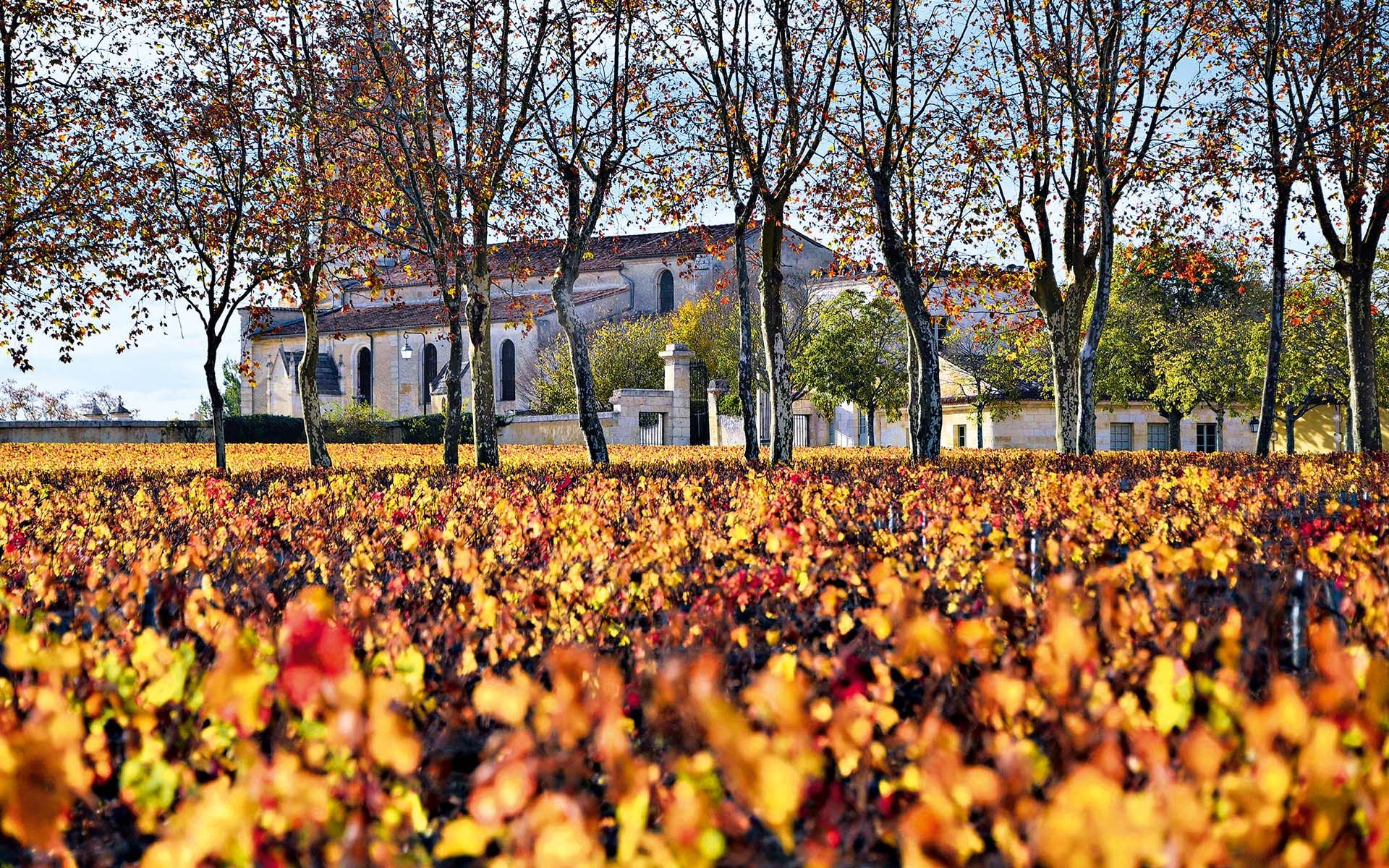
Vineyard and church in Margaux. Photo: Château Margaux
The estate's history isn't so straightforward, is it? After all, it changed hands so many times.
Yes, especially since we’re so fond of beheadings in France—that’s what happened to the owner of Château Margaux in 1789, after the French Revolution. Elie du Barry was her name.
Paint me a picture of strolling through the estate.
It is honestly the most gorgeous castle you can find in the region. What is unique is that, because of all these big trees on the grounds, you don’t see the château immediately. Suddenly it creeps up on you, and it’s magnificent.
"Some say that Château Margaux resembles the ‘Versailles of the Médoc."
As it was built in 1810, it has these Greek columns, which at the time, were very popular. It’s composed of multiple buildings that were built between 1810 and 1815, save for one building from 1765, and another we commissioned to the architect Norman Foster in 2015.
The Norman Foster?
The one and only. We wanted to find the right artist to create something that would work well with the landscape. It’s been 400 years that we’ve been making wine on the same terroir.
What does this contemporary building’s purpose serve?
It is a vat room. The vineyard's 80 hectares were previously divided into 25 big plots, so we needed 25 big vats to vinify everything. But we’re doing things differently now by dividing the 80 hectares in 100 smaller plots. The new cellar has allowed us to add 75 more vats.
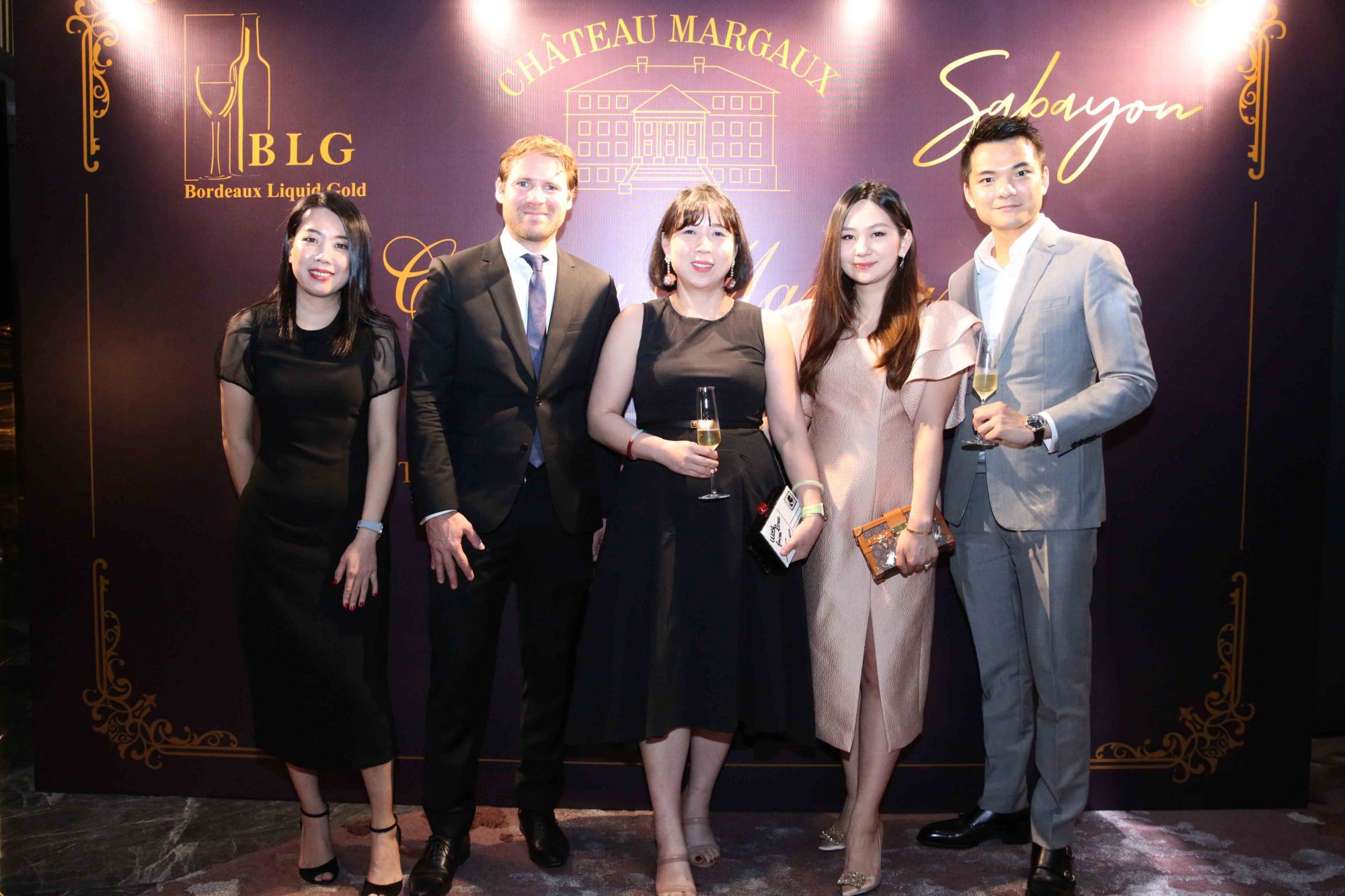
What's Château Margaux's production like these days?
We produce less than before, in fact.
Quality over quantity?
One big factor for the improvement of our wines has been our method of selection.
How does this tie in with Château Margaux’s second and third wines, Pavillon Rouge du Château Margaux and Margaux de Château Margaux.
In Bordeaux, a blend of the best plots is always better than any single element. There may be 100 different wines in our cellars, but we don’t sell 100 wines.
"The magic lies in our blends."
Every January and February, the technical team will get together every Wednesday and line up the 100 wines. We will taste each wine many times, and create different cocktails out of as many combinations as possible—this goes on for two whole months. At the end, we only take a third of the glasses, which means Château Margaux is now one-third of the production.
Next comes the second phase: after putting away all the glasses that were used for Château Margaux, we add 70 glasses, and the same bosses will try everything to determine what makes the best blend for Pavillon Rouge. By now Pavillon Rouge has been whittled down to 25 glasses.
The process is repeated for the ensuing selections. This is how we improve quality: by taking step after step after step.
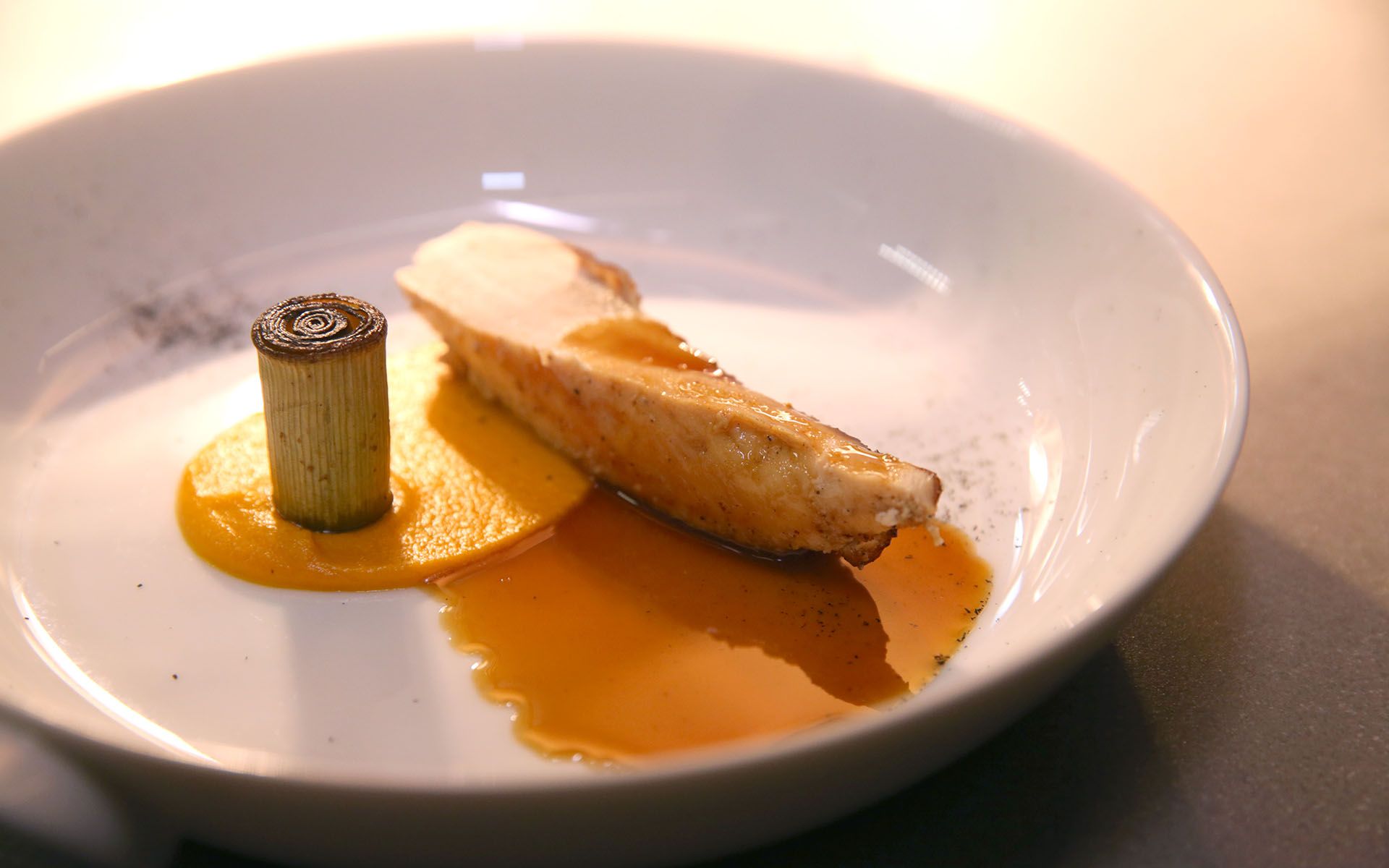
Buttermilk-Marinated Free-Range Chicken | Crispy Skin | Baked Leek | Tarragon Jus. Pairing: Pavillon Rouge 1996
In brief: to improve the quality of Château Margaux some time ago, we created Pavillon Rouge, and then to improve the quality of Pavillon Rouge we created Margaux de Château Margaux, and then to improve the quality of Margaux de Château Margaux, we created four other selections.
It’s going to be interesting for you to compare Pavillon Rouge 2009 and 1996. One way of looking at it is that the 2009 is a very young child whereas the 1996 is a young adult. However, we were more selective with the 2009 than with the 1996, as we already had our third wine in the 2000s, not prior.
While the 2009 is more ‘intelligent,’ the 1996 has more maturity on top of this beautiful perfume, and of course, the food is going to match the different personalities of the wines.
We've exchanged much thought on the reds. What should novices know about Pavillon Blanc?
Pavillon Blanc makes up a whole third of Château Margaux’s production!
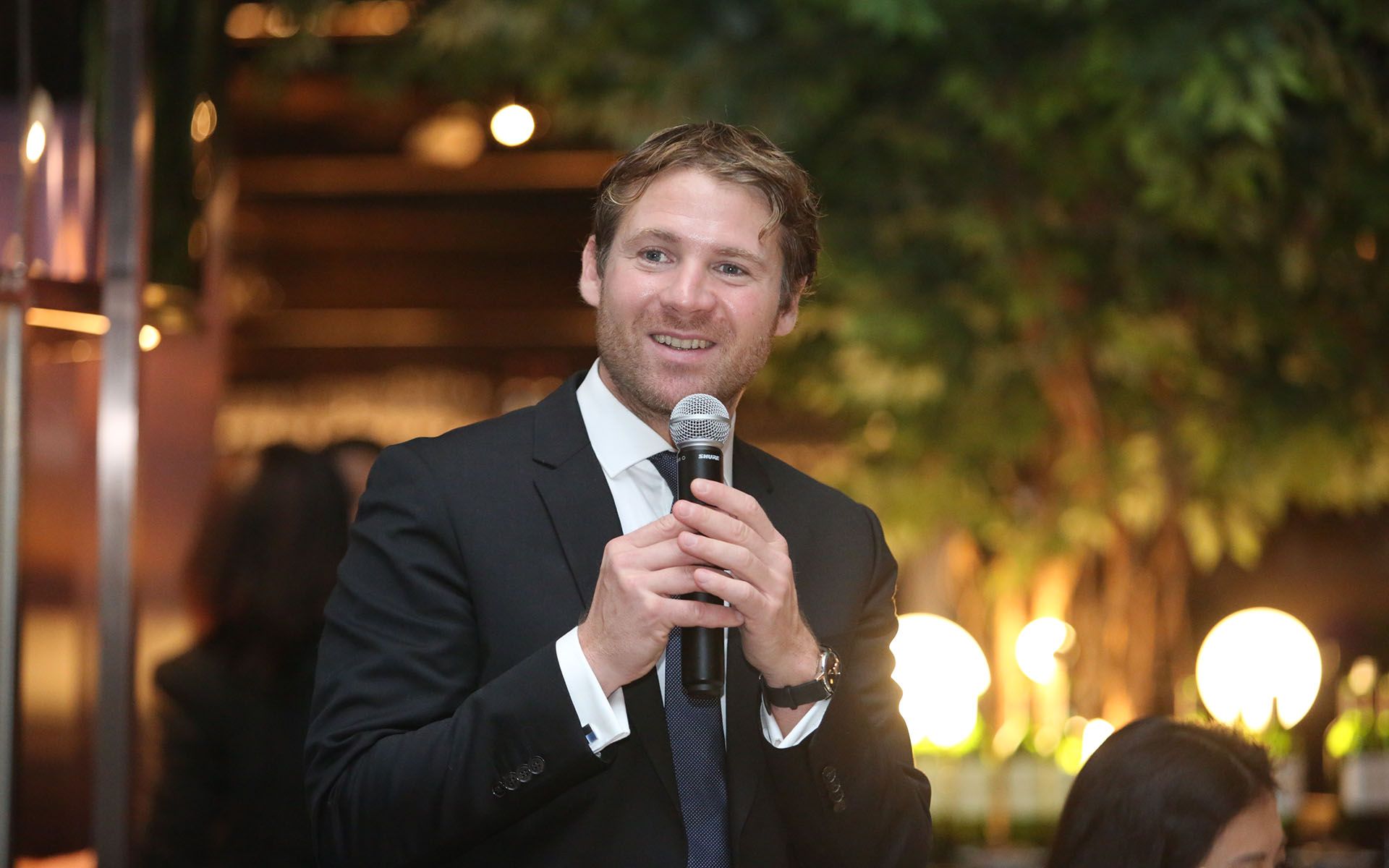
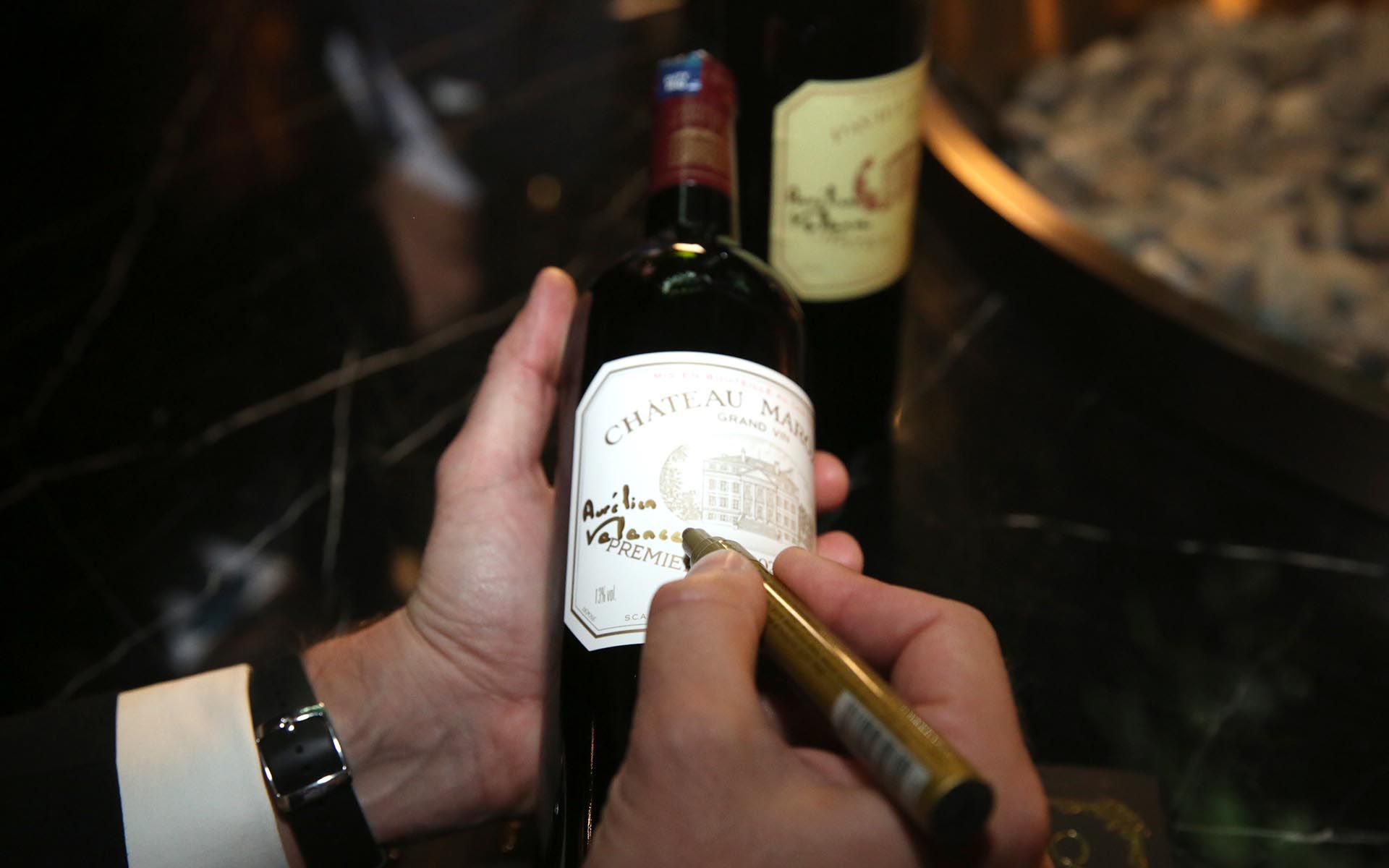
Aurélien Valance, deputy general manager of Château MargauxDidn't you say New York was home, once upon a time? Were you in wine at the time?
Yes! I created a wine imports company called Vintus. We had two partners in the beginning. And then two, three, five, twenty… I’m sure you know Guigal and Bollinger Champagne. I was happy in New York and the job was fabulous, but a proposal from Château Margaux came in... and you don't say no to Château Margaux.
photography BORDEAUX LIQUID GOLD
-
Wining & Dining With Yvonne Chiong Mougin, Jetsetter & Export Manager12th Nov ,2019Wining & Dining With Yvonne Chiong Mougin, Jetsetter & Export Manager For Opus Onevonne Chiong Mougin, Opus One export managerBy Samantha Lim / November 08, 2019Opus One’s multilingual ex.....read more
Wining & Dining With Yvonne Chiong Mougin, Jetsetter & Export Manager For Opus One
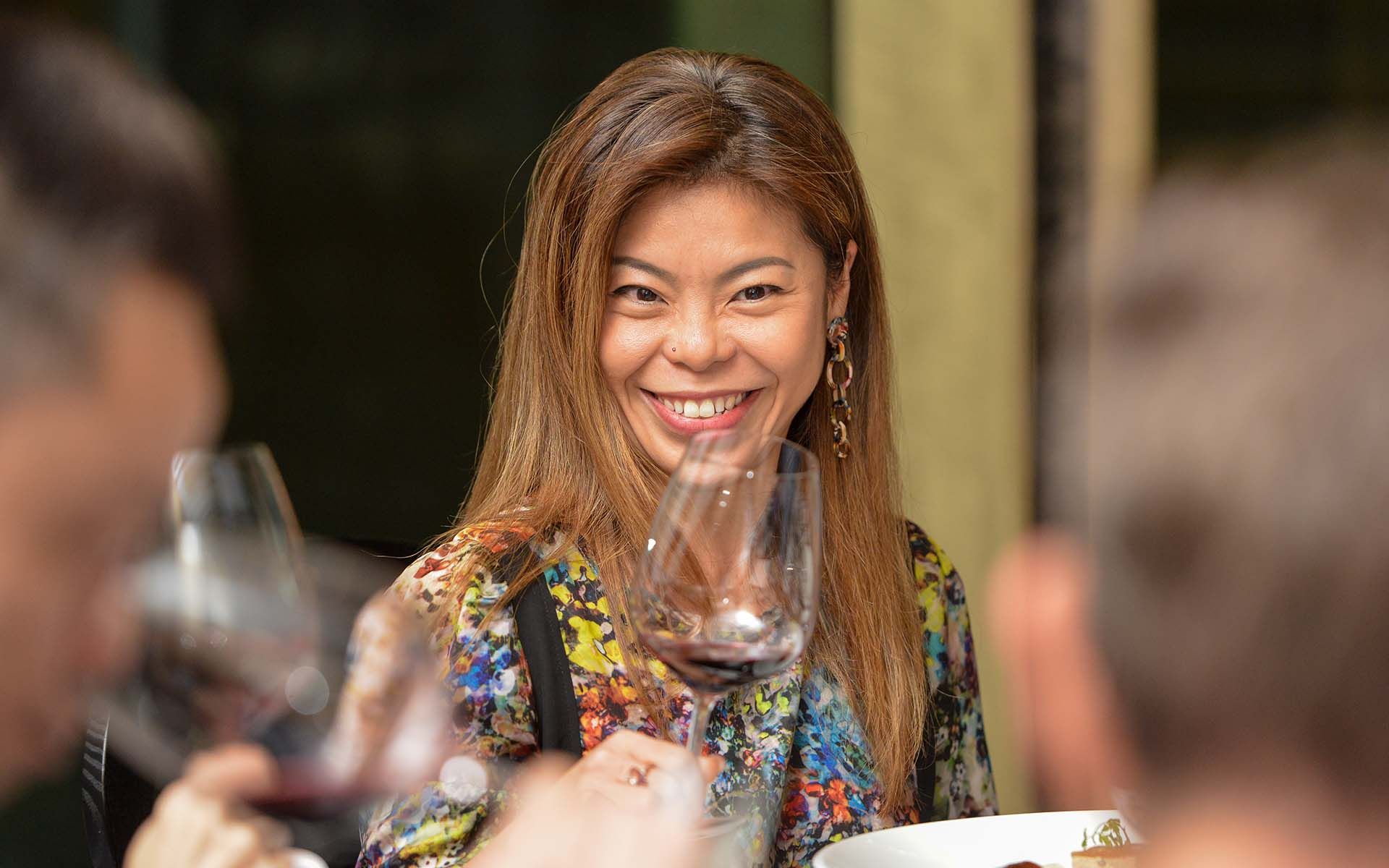
vonne Chiong Mougin, Opus One export managerBy Samantha Lim / November 08, 2019
Opus One’s multilingual export manager for Hong Kong, Macau, Taiwan and Southeast Asia describes the past two decades in hospitality and wine as a living dream
When two powerhouse wineries concur to create wines together, quantity becomes secondary to uncompromising quality. Baron Philippe de Rothschild of Bordeaux’s Château Mouton Rothschild and Robert Mondavi of California’s Napa Valley agreed that only one wine would be released to the world annually.
Thanks to the generosity of Bordeaux Liquid Gold, T.Dining Malaysia was among the fortunate few to taste this year’s vintage before its official release. Opus One 2016 was specifically flown in from the winery and served at Yun House, Four Seasons Kuala Lumpur, to complement Chef Jimmy Wong's Cantonese-style cooking.
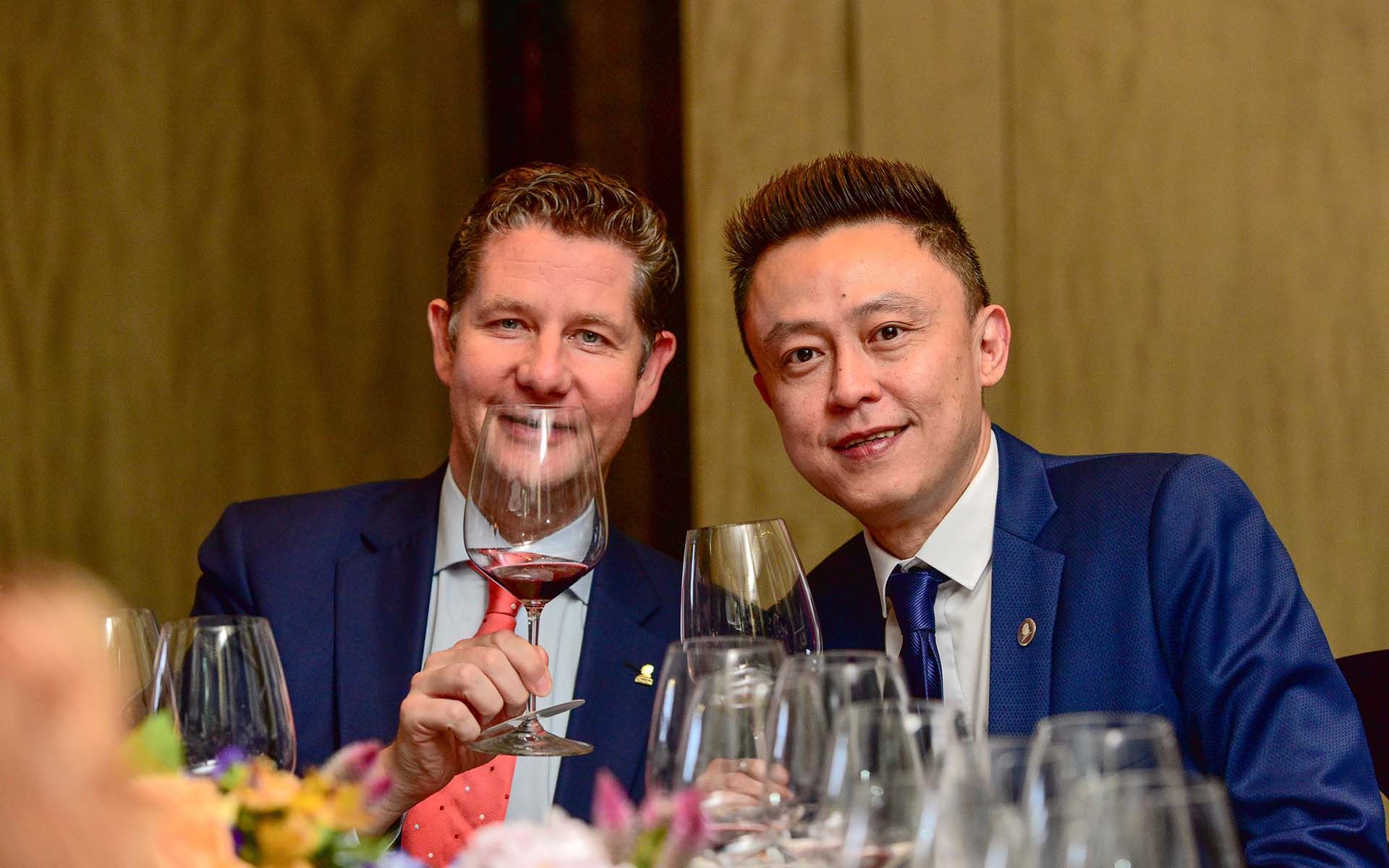
Tom Roelens, general manager of the Four Seasons Hotel Kuala Lumpur and Julian Poh, CEO of Bordeaux Liquid GoldI have a little gift for you. It's a lapel pin of our logo. As you can see, the two heads represent our two very important founders, Robert Mondavi and Baron Philippe de Rothschild. Some say two heads are better than one!
That's very sweet of you. Your decade-long anniversary with Opus One is just around the bend. How will you celebrate your ‘tin’ anniversary with the company?
I didn’t think I’d be with Opus One for so long, as I’d always been with hotels before this. I love that I’m constantly challenged to try new things and to explore new markets. Here I am today, but in three weeks' time I’ll be in Cambodia to host dinners in Siem Reap and Phnom Penh. Last Chinese New Year saw me in South Africa and I spent my summer in Tuscany before heading to Alba where I visited a very special winery that dips their grapes in the sea. In ancient times, people dipped their grapes in the sea to get rid of the wax.
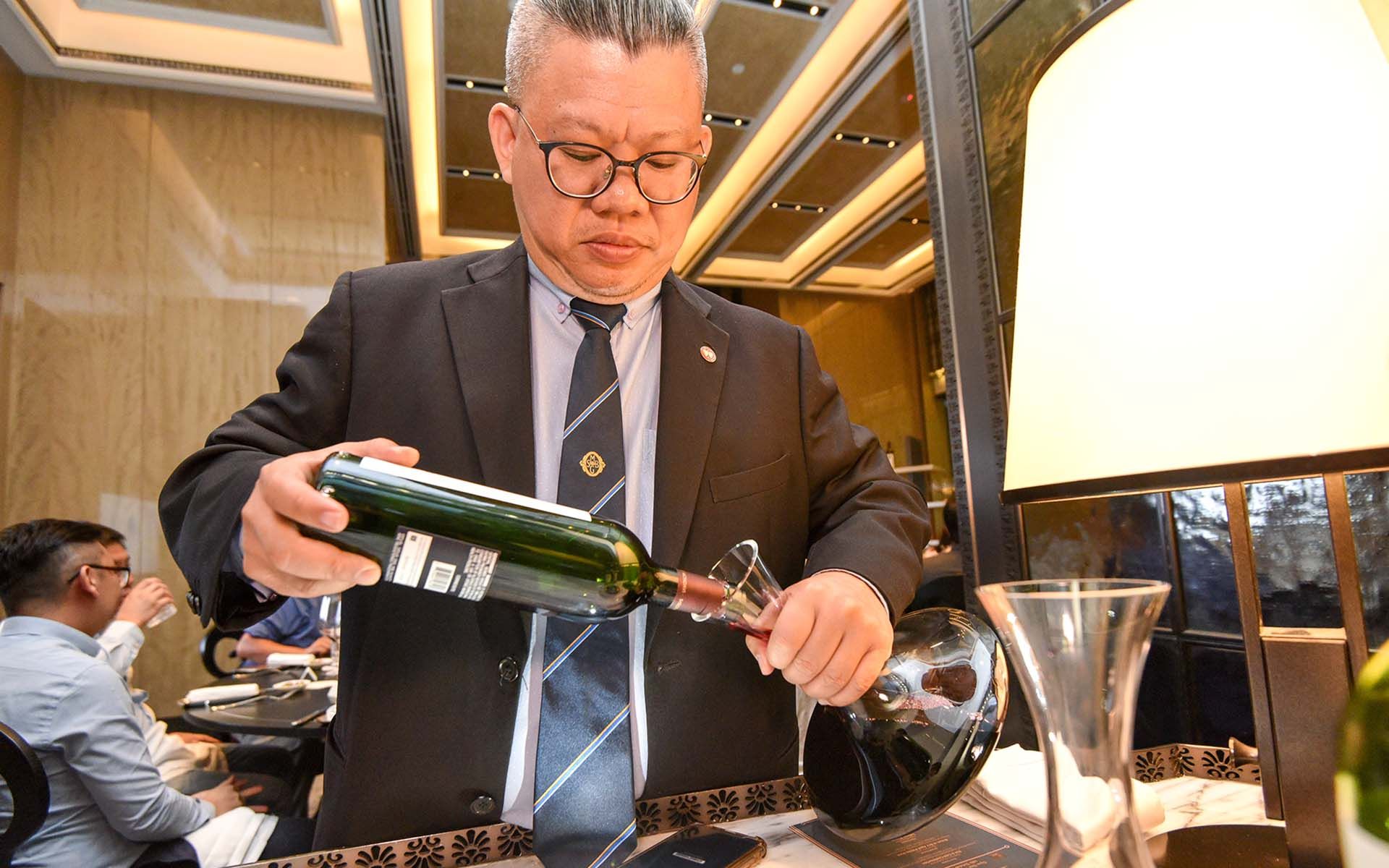
Chris Low, chancellor of the Jurade de Saint-Emilion in Kuala LumpurI'm in awe of you assuming the chief sommelier position at Jean-Georges in Shanghai from 2003 to 2007.
I was very lucky because even staff meal was, well, cuisine by Jean-Georges.
What did they serve for staff meal, if you don't mind divulging?
Anything you liked off the à la carte menu, except for certain cheeses, as these are expensive in China and we only had them during rare occasions.
Your passion for wine is evidently matched by your love of fine food. Do you cook?
Yes, I do. I cook all sorts!
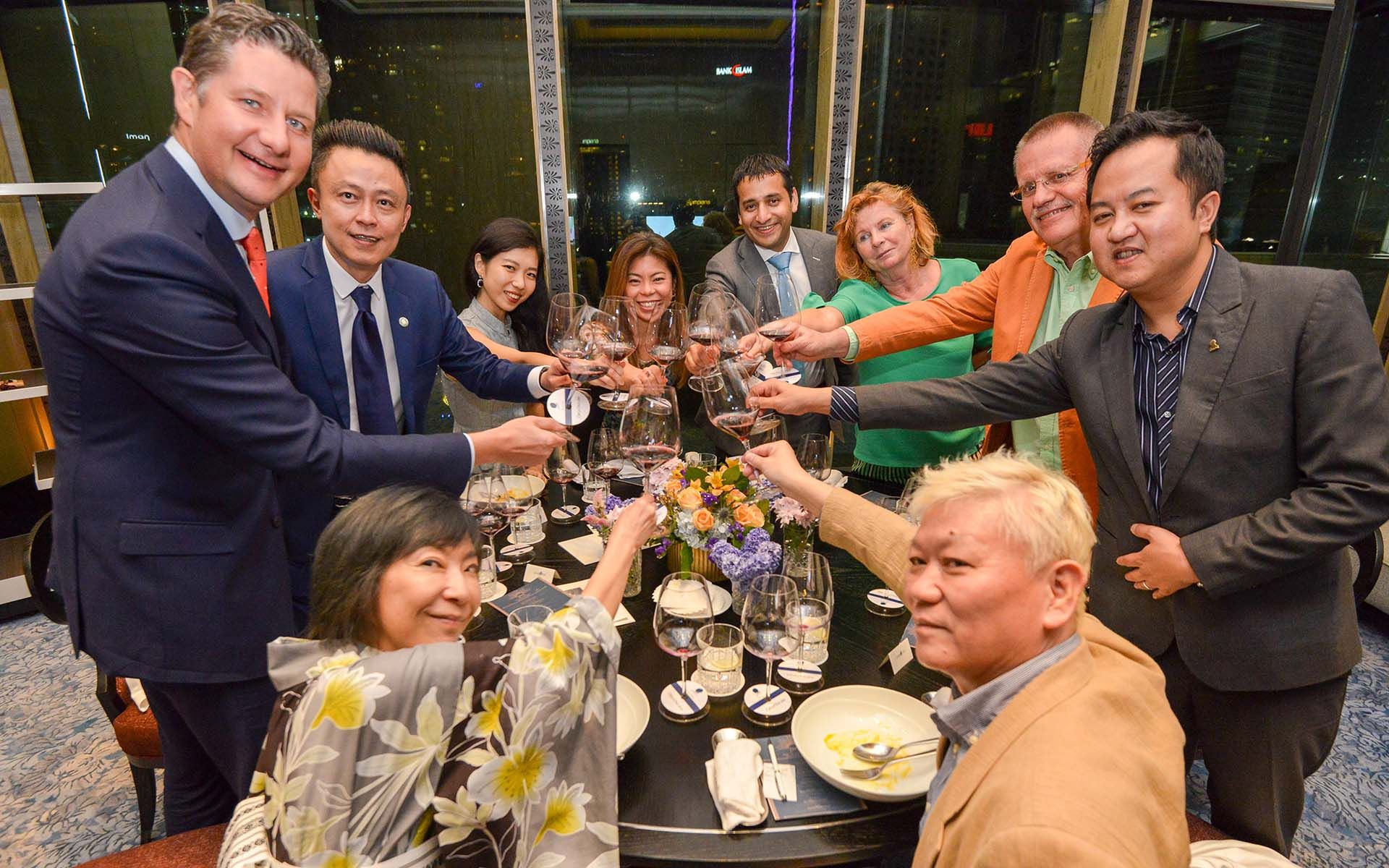
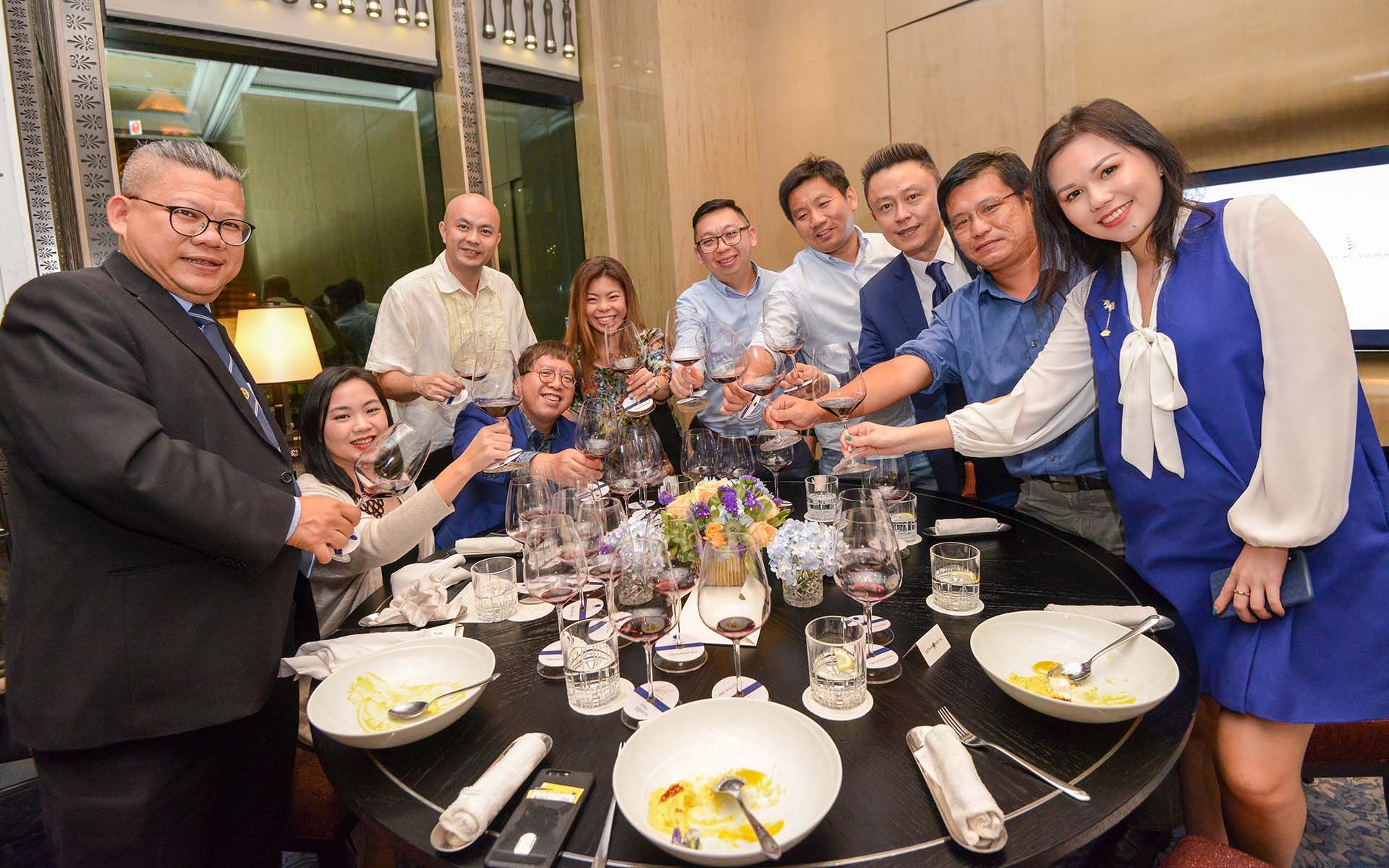
Being equally eloquent in English and Mandarin gives you an edge in the Asian wine market. But when it comes to wine descriptors, can things get lost in translation?
Because I’ve always spoken English, the first descriptors that come to mind are always in English. Using French can be a bit more delicate, as the French break things down into more singular flavours and aromas. The English wine dictionary is a bit more sensitive.
How about when you’re in Shanghai?
I deliver in Mandarin. Some say that Shanghainese is very rough, but it doesn’t have to be. When I apply Shanghainese, people describe my speech as girlish or feminine. I had to learn the language when I moved to Shanghai in 2003 for the sake of educating others. Because I'd picked up wine lingo in English, conveying everything in Mandarin wasn’t easy at all—it hadn’t yet become part of daily life. But once you apply connectors, Mandarin descriptive notes can be very poetic. In English, one would say ‘silky tannins.’ In Mandarin, you’d have to say ‘silky smooth tannins.’
So you have to embellish your vocabulary when translating—it can’t be word for word.
That’s right.
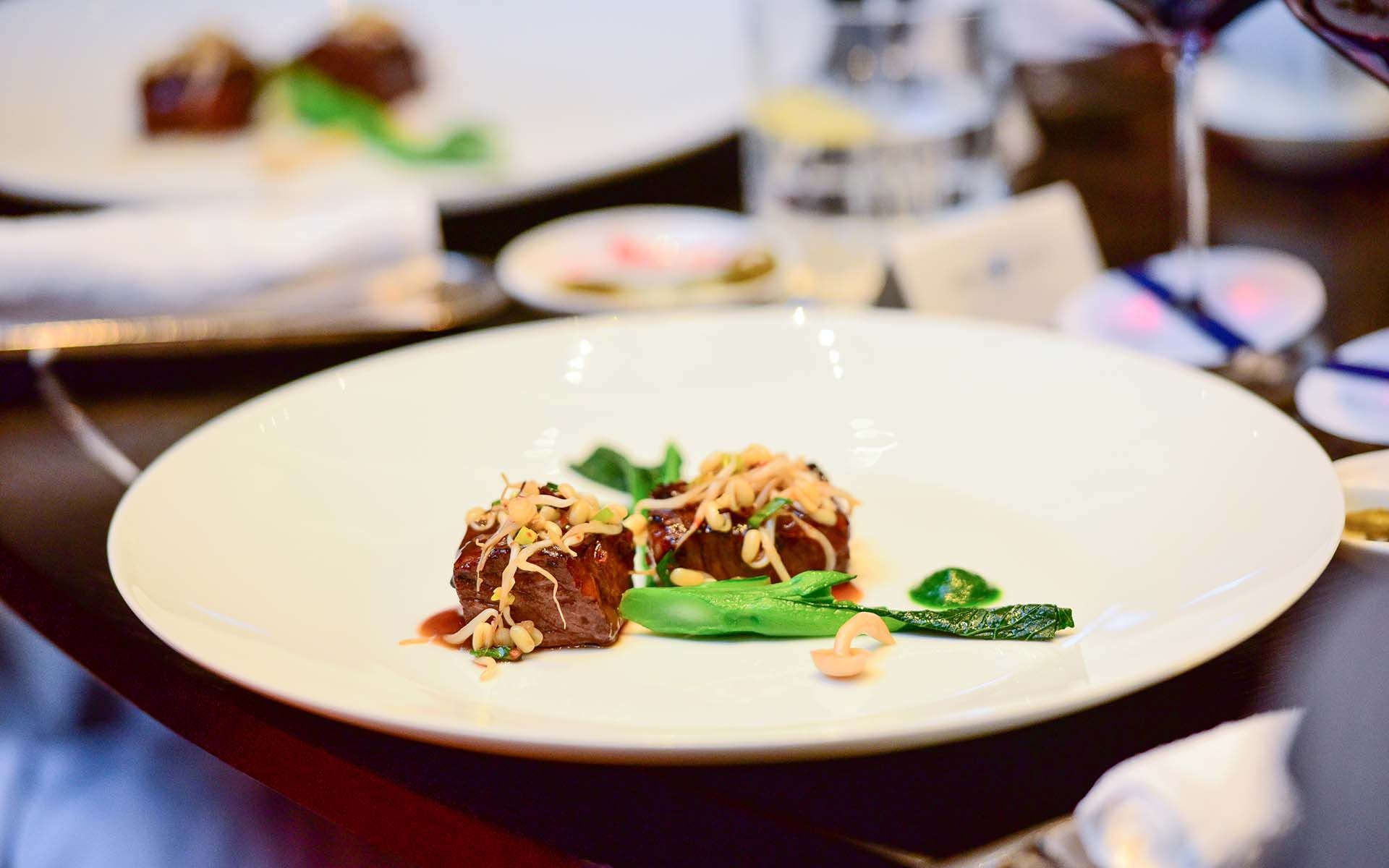
Stir-fried Wagyu beef with X.O purée, Chinese broccoli and rice crackersDo you have your own wine cellar?
I do. I have several in different countries. I even play around with our loyal customers’ cellars when I’m invited over to theirs for lunch. I’ll put stickers on their bottles to tell them if they should be keeping their wines or if they should be drinking them.
I could certainly use your expertise. Some of my family’s wines have all but turned to vinegar.
The thing about buying wines is that you sometimes forget you have them lying around, especially when newer bottles come your way. Managing a cellar is not as easy as it seems, and as far as collections go, you must have real passion... or bottles simply end up lying around. I see it happen all the time. The mind set is, “I’ll just put this aside, as you’re not supposed to drink this wine type for the next so and so years.
"Not every Barolo should be kept for 12 years, not every Barbaresco should be kept for five to eight years. There’s no textbook formula for these things."
Every winery is different, every style of winemaking is different. There are natural wines or a biodynamic wines that you can keep for 15 years—you just have to know which ones.
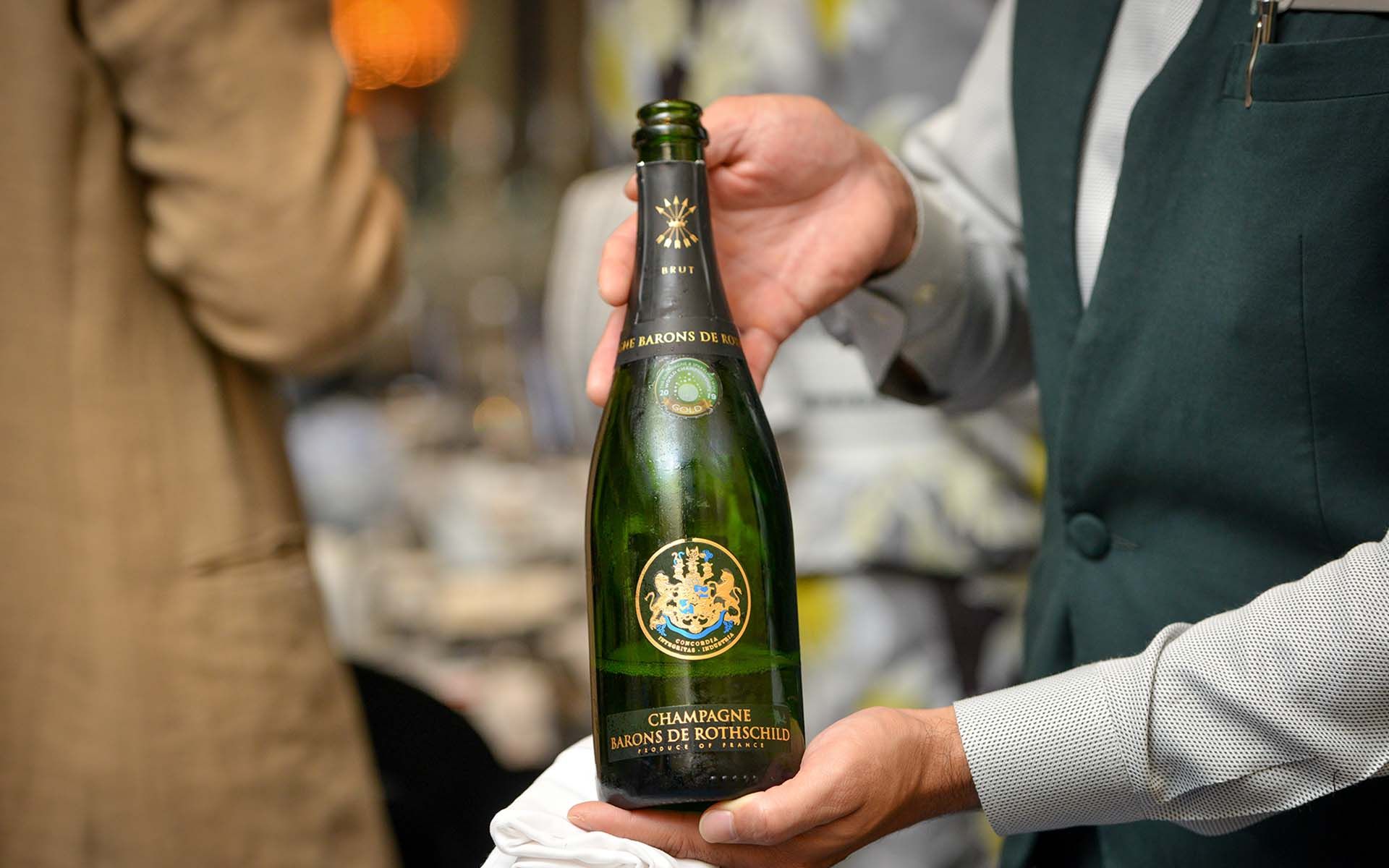
Champagne Baron de RothschildDo you fear for the future of wine? And by that I’m referring to climate change.
Yes, the world is changing. In Germany the wine with the highest sugar concentration is TBA or Trockenbeerenauslese—‘trocken’ means ‘dry,’ ‘beeren’ means ‘berry’ and ‘auslese’ means ’late harvest.’ Because things are warming up, they no longer have this level of wine, as the grapes don’t freeze but rot. So they don’t make ice wine anymore and any vintage ice wine is auctioned off, because they’re so rare.
You may have seen how the UK is making sparkling wines that are doing very well. It’s because of climate change. There will be a shift.
Picture Malaysian Merlots!
Who knows? Thailand is making wines, Bali is making wines, and China most certainly is.
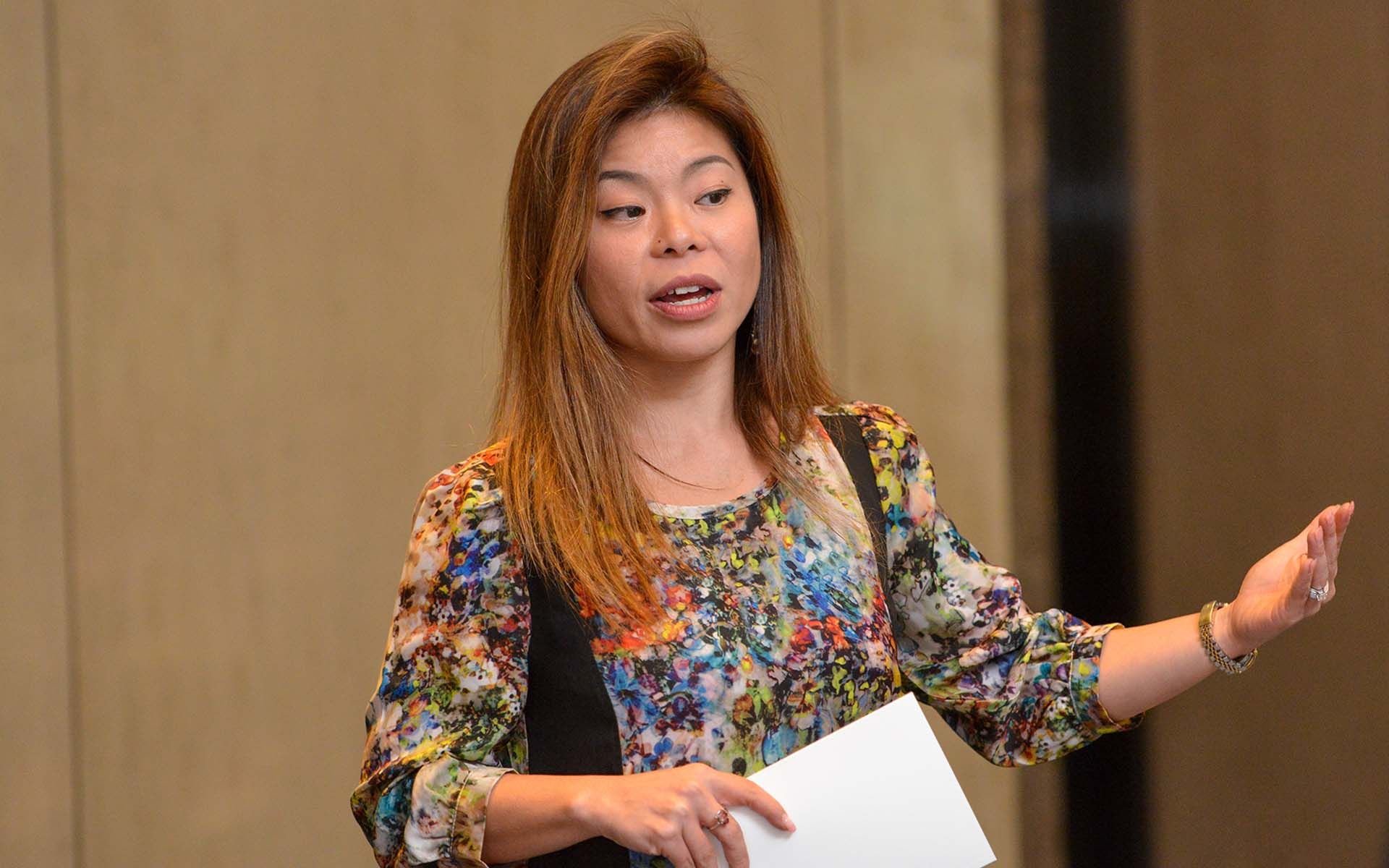
Yvonne Chiong Mougin, Opus One export manager
About Opus One 2016
Opus One 2016 was officially released at the winery on October 1st, and the physical bottles are slated to arrive in Malaysia at the end of November or the start of December.
Remarkably well-rounded with immediate aromas of fresh fruit and baking spices, the 2016 gives off a bouquet of black olive and herbs such as sage and rosemary. Juicy on the palate and velvety in terms of mouthfeel, the wine comprised of 77% Cabernet Sauvignon, 8% Petit Verdot, 8% Merlot, 5% Cabernet Franc and 2% Malbec has a long finish with lingering cacao and coffee notes.
Visit DiineOut.com to discover more epic tastings held in collaboration with cult winemakers.
-
TOP DRINKS SUPPLIER HOOK-UPS: AUGUST-SEPTEMBER17th Oct ,201924th September, 2019 by Phoebe FrenchWindsor Great Park x Bordeaux Liquid GoldLast month, Direct Wines Production announced the appointment of Singapore-based fine wine merchant Bordeaux Liquid Gold a.....read more
24th September, 2019 by Phoebe French
Windsor Great Park x Bordeaux Liquid Gold
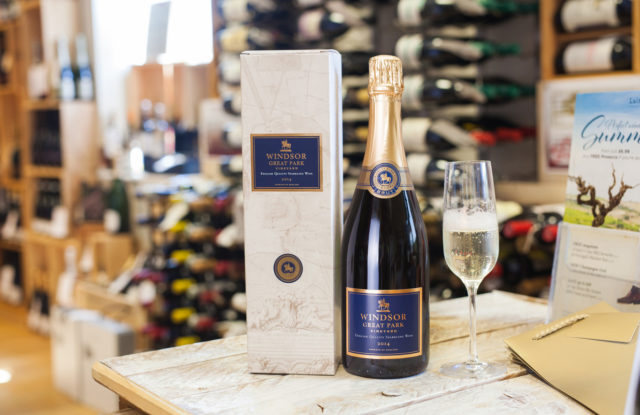
Last month, Direct Wines Production announced the appointment of Singapore-based fine wine merchant Bordeaux Liquid Gold as the exclusive distributor of Windsor Great Park Vineyard in Malaysia.
Windsor Great Park Vineyard produces wine from a 3-hectare site in the Windsor Great Park and is a collaboration between DWP and the Royal Family.
Planted in 2011, the vineyard is managed by tenant farmers, with the inaugural 2013 vintage released in 2016 to mark Queen Elizabeth’s 90th birthday.
Bordeaux Liquid Gold will now take over distribution in Malaysia starting with the 2015 vintage. This follows news that exports of English wine doubled in 2018, with 8% of the total volume exported in 2018 compared to 4% in 2017.
Windsor Great Park is vinified at Ridgeview in East Sussex.
Iain Muggoch, general manager of DWP, commented: “We are extremely pleased to announce this new partnership with Bordeaux Liquid Gold in Malaysia. With this appointment, Windsor Great Park Vineyard joins a stellar portfolio including Paul Jaboulet Aîné, No. 3 d’Angélus, Clarendelle by Haut-Brion, Champagne Barons de Rothschild and many more. We are excited about this collaboration and we look forward to bringing this iconic English wine to Malaysia’s discerning wine lovers.”
Julian Poh, CEO of Bordeaux Liquid Gold, added: “We would like our clients in Malaysia to experience the emotion and luxury of this beautiful sparkling wine from Windsor Great Park Vineyard.”
DWP is the production arm of Laithwaite’s Direct Wines group.
-
Bottle of Burgundy fetches record-smashing £424,000 at wine auction07th Aug ,2019Two bottles of 1945 Burgundy set records at auction in New York CREDIT: SOTHEBY'SAbottle of 1945 Romanee-Conti wine fetched a record-smashing $558,000 (£424,000) at an auction held at Sotheby's in New.....read more
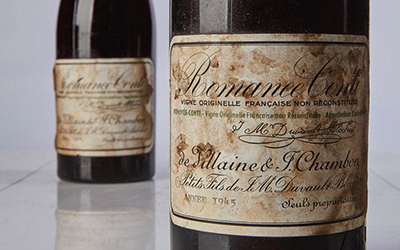
Two bottles of 1945 Burgundy set records at auction in New York CREDIT: SOTHEBY'S
Abottle of 1945 Romanee-Conti wine fetched a record-smashing $558,000 (£424,000) at an auction held at Sotheby's in New York Saturday, which saw two bottles break the previous record.
The final price, including taxes and commissions, was 17 times the auction house's $32,000 upper estimate for the fine French wine.
Romanee-Conti is widely considered the best Burgundy wine, and is one of the world's most prestigious producers.
Its domaine, in the Cote de Nuits region, spans less than four acres (two hectares), producing between 5,000 and 6,000 bottles per year.
The bottle is one of 600 produced in 1945, just before the vines were pulled up for replanting.
A few minutes after Saturday's sale, another 1945 Romanee-Conti was sold for $496,000.
The previous record for a standard wine bottle was held by an 1869 Chateau Lafite Rothschild, sold in Hong Kong in 2010 for $233,000.
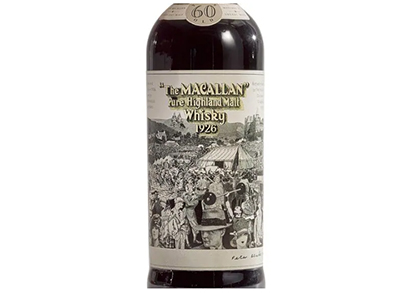
This bottle of 1926 Macallan, with a label illustrated by Peter Blake sold for $843,200 - a new US record CREDIT: SOTHEBY'S
But of all sizes, a $310,700 3-litre 1945 Mouton-Rothschild scooped the previous record at a 2007 auction in New York.
Saturday's lots came from the personal collection of Robert Drouhin, who from 1957 to 2003 directed wine producer Maison Joseph Drouhin, one of Burgundy's most prominent.
Elsewhere at the auction, a bottle of 60-year-old 1926 Scotch whisky fetched $843,200 - failing to break a $1.2 million record set in October.
Founded in 1924, The Macallan distillery, of Carigellachie, northern Scotland, produced just 40 such bottles in 1986. Unlike wine, whisky stops maturing once bottled.
Twelve of them, including that sold Saturday, had labels illustrated by Peter Blake, who designed the Beatles "Sgt. Pepper's Lonely Hearts Club Band" album cover.
Three of the 1926 whiskies - one with Blake's illustrations, and two others featuring artwork by Italian Valerio Adami - fetched more than $1 million each at auction over the past six months.
-
MOUTON MD: 2016 ‘CLEARLY AN EXCELLENT VINTAGE’07th Feb ,2017 by Patrick SchmittThe 2016 harvest in Bordeaux “is clearly an excellent vintage” and on a par in terms of quality with 2005 and 2009, according to Philippe Dhalluin, the managing director of Mouton Rothschild.Although .....read more
The 2016 harvest in Bordeaux “is clearly an excellent vintage” and on a par in terms of quality with 2005 and 2009, according to Philippe Dhalluin, the managing director of Mouton Rothschild.
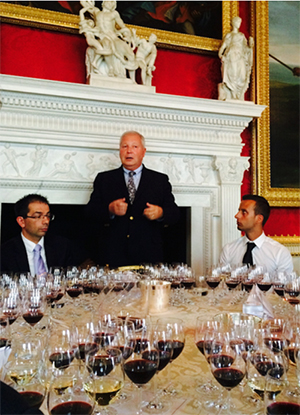
Although he said that he would “wait and see what the critics will say,” Dhalluin, who has overseen winemaking at the first growth property since late 2003, told the drinks business last week that “everyone was very happy with the vintage.”
Continuing, he said that “it is clearly a great vintage” across the Mouton Rothschild estates – which includes Pauillac-properties Clerc Milon and d’Armailhac as well as, of course, the famous first growth.
He said that he could confidently state this because “I have the analytics”, noting that sugar levels were good, producing alcohol levels in the wine of “slightly over 13%, which is pretty high for our estates”, while the vintage has produced wines “with a lot of tannins, they are, as you say in English, creamy tannins.”
Speaking further about the tannins, he said that 2016 had produced the highest level of polyphenols ever recorded at Mouton Rothschild, before noting that the property has been monitoring polyphenol levels for over 30 years.
Meanwhile, he described the wines as “very juicy, with a lot of flesh; they are rich without being over-alcoholic,” commenting too that the wines had a “very good freshness and balance”.
Looking back over the course of 2016, he said the year was “bi-polar”, beginning with record-breaking levels of rainfall, before the weather changed dramatically from the end of June, when extremely dry conditions set in, creating near-drought conditions in the region throughout July and August.
Due to the large amounts of rainfall in the first part of the year there was enough ground water to support the vines throughout the arid summer, meaning that the yields in 2016 are in fact slightly higher than the previous year, when the vineyards produced as little as 35 hectolitres per hectare on average.
Having described Bordeaux 2016 as “between 2005 and 2009 in style”, he added that the latest harvest was “clearly” on a par in terms of quality with both these critically-acclaimed vintages.
Drawing a comparison with the advent of two consecutive excellent but stylistically different vintages in Bordeaux with 2009 and 2010, he said that 2016 “had more density than 2015, even if 2015 is exceptional too, so maybe people will prefer the 2016: it will be like 2009 and 2010.”
Due to the extremely wet first half of the year, Dhalluin admitted that the Bordelais had initially had very low expectations for the vintage.
“This vintage is a surprise for everyone,” he summed up.
-
Bordeaux Liquid Gold Takes On Vega Sicilia12th Oct ,2017 by Natalie WangFamed Spanish winery, Vega Sicilia, has set its sights on Myanmar’s wine market with a newly formed distribution agreement with Singapore-based Bordeaux Liquid Gold (BLG), following the country’s loos.....read more
Famed Spanish winery, Vega Sicilia, has set its sights on Myanmar’s wine market with a newly formed distribution agreement with Singapore-based Bordeaux Liquid Gold (BLG), following the country’s loosened grip on wine imports.
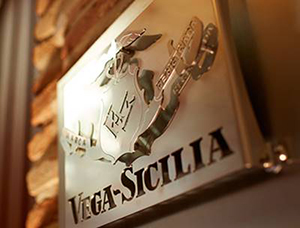
This will be the first time the Spanish ‘first growth’ has officially shipped its wines to the Southeastern Asian country after years of trade sanctions.
Starting in 2015, the country’s Ministry of Commerce opened the door for wine imports by giving out legal licenses to companies to import wines. By the end of 2016, about 25 companies were permitted to import wines, reported The Myanmar Times.
“The social and economic situation in Myanmar has improved sharply in the last years, however, coming into the premium wine market is still challenging,” Pablo Álvarez, CEO of the winery, told dbHK, commenting on the entrance.
“Nevertheless, we consider this is the perfect moment to bring in our wines and we, together with BLG, will have a good welcome for sure,” he continued.
Compared with neighbouring countries like Thailand, where wine consumption takes up less than 1% of the country’s total alcohol consumption, Myanmar’s wine demand is slightly more robust, although still dwarfed by more popular beer and whisky, accounting for around 6% of the country’s total alcohol consumption, according to a report by World Bank in 2010.
Beer alone, however, makes up more than 80% of the country’s beverage consumption and Euromonitor has predicted that Myanmar’s beer market will almost double in value from US$375 million in 2015 to US$675 million by 2018.
One of the most iconic Spanish wineries, Vega Sicilia was founded in 1864, and has become part of the Alvarez Family since 1982.
It has steadily grown over time with the addition of a few more estates to become Tempos Vega Sicilia including flagship Vega Sicilia, Macán, Pintia, Alion in Spain and Tokaj-Oremus in Hungary.
-
A taste of fine French wines from the estates of Baron Philippe de Rothschild SA14th Jan ,2018 by Lee Khang YiThe wine dinner, a first in Malaysia, featured a selection of fine wines and champagne from Baron Philippe de Rothschild S.A. — Pictures by Zuraneeza Zulkifli and courtesy of Bordeaux Liquid GoldKUALA.....read more
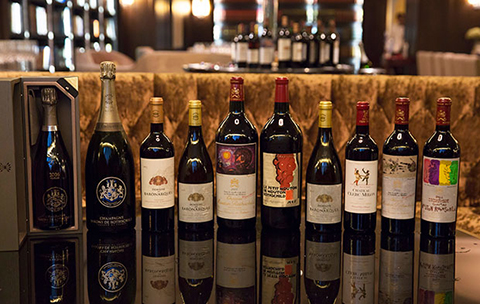
The wine dinner, a first in Malaysia, featured a selection of fine wines and champagne from Baron Philippe de Rothschild S.A. — Pictures by Zuraneeza Zulkifli and courtesy of Bordeaux Liquid Gold
KUALA LUMPUR, Jan 14 — For the first time in Malaysia, the prestigious Baron Philippe de Rothschild S.A. recently hosted a dinner showcasing their fine wine collection.
It is a special honour for Malaysia to be selected as only three to five dinners are held worldwide on an annual basis.
In 1853, Baron Nathaniel de Rothschild purchased Brane-Mouton in Pauillac and renamed it Mouton Rothschild. In 1922, his great grandson Baron Phillipe took over and created Mouton Cadet in 1933 which has now been elevated to the world’s leading Bordeaux AOC brand.
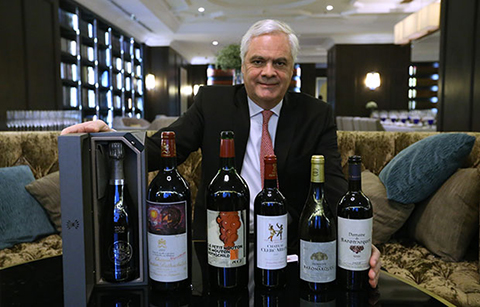
Baron Philippe de Rothschild S.A. Commercial Director Hervé Gouin with a selection of their wines and champagne.
In 1970, they purchased Château Clerc Milon and Mouton Rothschild was elevated to First Growth status in 1973. They also have created a dry white wine, Aile d’Argent and Le Petit Mouton.
Joint ventures have also been created such as Opus One with California-based Robert Mondavi and Almaviva with Concha y Toro, in Chile. In 1998, they purchased Domaine de Baronarques in the Pays d’Oc.
Since 1945, there has been strong ties between Mouton and the arts. Each year, wine labels have been illustrated by great artists such as Dali, Picasso, Andy Warhol, making them highly sought-after collectors items.
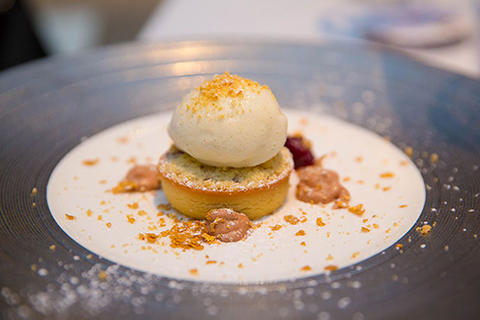
A sweet end to the dinner with a cherry tartlet topped with crumble and served with Jivara chocolate creme that was paired with Chateau Mouton Rothschild 2005.
In 1962, they opened the Museum of Wine in Art on their premises which is a leading tourist attraction as it houses a collection of precious objects celebrating the wine.
The Malaysian dinner was hosted by Baron Philippe de Rothschild S.A. Commercial Director Hervé Gouin who believes in the potential for their wine in Malaysia. “I think the market has started to be more open,” he said.
In Malaysia, they have partnered with Bordeaux Liquid Gold, who has been distributing their wines for 10 years. Bordeaux Liquid Gold Chief Executive Officer Julian Poh tells us they have also been awarded exclusive distribution rights for Champagne Barons De Rothschild and Domaine de Baronarques, that has been labelled as a “golden opportunity” by Gouin.
He also adds that they selected the company because, “Firstly, it’s because we trust them. It’s important to trust people in this business. We expect that the Malaysian market will grow and we have the right people to introduce the brand to the market.”
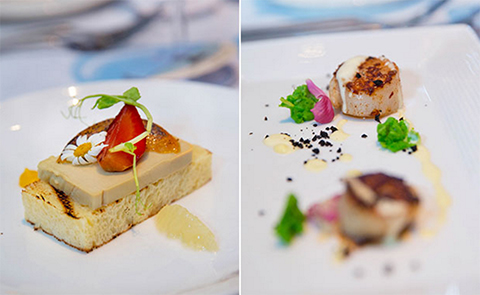
A creamy foie gras terrine topped milky brioche and was served with lemon confit and berries that was paired with Chateau Clerc Milon 2009 and Chateau Petit Mouton 2007 in magnum (left). The appetiser was seared scallops, crushed peas, black olives with cream sauce that was paired with Domaine de Baronarques 2009 (right).
For the wine pairing dinner held at The Library, Ritz-Carlton KL, they brought out a selection of their classical wines like Château Mouton Rothschild, Château Clerc Milon and Château Petit Mouton.
“We have a nice selection of different vintages and different estates. It’s a small travel around the French wine culture in the Pauillac region, south-east of France,” said Gouin.
The dinner also debuted two interesting wines from the Domaine de Baronarques, a small steep sloped estate in the Limoges region at the south of France, purchased by the Rothschild family.
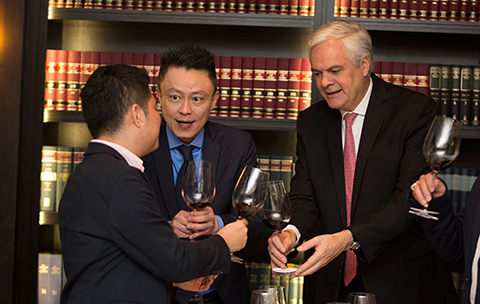
Salut! (from left to right): Bordeaux Liquid Gold Chief Executive Officer and Baron Philippe de Rothschild S.A. Commercial Director Hervé Gouin.
“They invested money to replant and readapt a selection of vines to produce a top red wine and white wine,” explained Gouin. What makes this vineyard unique is its double climate. “You have the influence of the Bordeaux climate and the Mediterranean climate,” said Gouin.
Wine aficionados will appreciate the Chardonnay with its elegant taste and the aromas of pear, lemon and hawthorn. “It’s a top Chardonnay with the ambition to compete with the other labels. It’s a very concentrated Chardonnay with a lot of acidity, very elegant and extremely mineral,” explained Gouin.
The other is a classical red wine Domaine de Baronarques with a deep bright garnet red colour and the aroma of blackcurrants, notes of cedar and eucalyptus. Gouin also goes on to explain that in the varietal mix for the wine, you have more of the Mediterranean influence with the Syrah and because of the appellation, there is more of 50 per cent of Merlot. The blend also contains a top Cabernet Sauvignon.
“In terms of how we produce the wine, everything is done exactly like Mouton, in the Bordeaux style,” said Gouin. This includes picking the grapes by hand he says, putting it whole into small baskets of 12 kilograms, bringing it carefully to the cellar followed by fermentation and maturation in the oak casks.
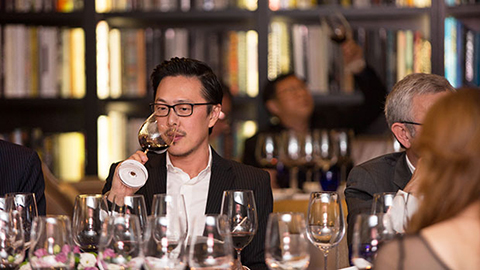
The exclusive wine dinner was enjoyed by a group of wine connoisseurs.
Even the same technical team from Mouton is in charge of the estate. “It is like a Bordeaux classic except it’s in Limoges and we have a combination of climates,” he said. Since its introduction to the Malaysian market about six months ago, the two wines have been incredibly well received, according to Poh.
For dinner, fine French food was paired with the wine and champagne. It kicked off with Champagne de Rothschild Blancs de Blanc Grand Cru in magnum, which has the bouquet of softly toasted vanilla beans.
The Champagne De Rothschild Vintage 2008 was also served and boasted an exceptional finesse. Le Chardonnay de Domaine de Baronsques 2014 was paired with the amuse bouche of cured salmon, shaved fennel, and avruga caviar where its freshness complemented the creamy taste of the appetiser.
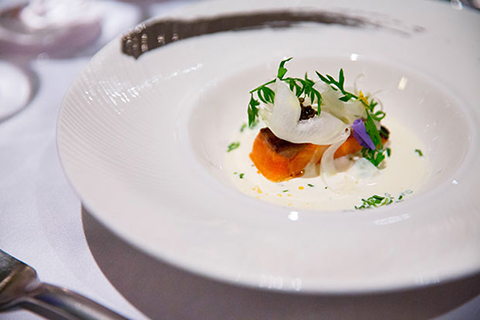
Cured salmon, shaved fennel, avruga caviar was served with Le Chardonnay de Domaine de Baronarques 2014.
For the Domaine de Baronarques 2009, this was paired with an appetiser of seared scallops, crushed pea, black olive and cream sauce.
The second appetiser of foie gras terrine that topped a toasted milky brioche paired with lemon confit and berries, saw a tasting of Château Clerc Milon 2009 and Château Petit Mouton 2007 in magnum.
The Château Clerc Milon wine has a nose of black fruit mingled with floral, mineral and liquorice notes. Drinking it gives you a highly refined rich, elegant wine with well integrated tannins.
In contrast, Petit Mouton which is made from Cabernet Sauvignon, Merlot and Cabernet Franc grapes has more floral notes and a variety of spice.
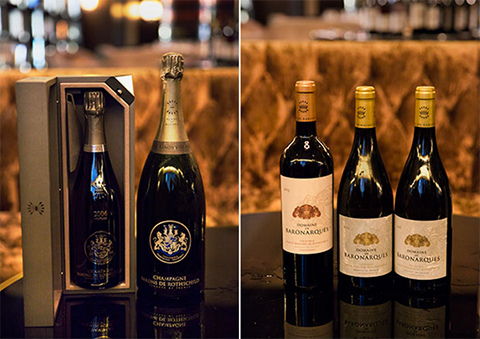
Bordeaux Liquid Gold holds the exclusive licence to dstribute the Champagne Barons de Rothschild in Malaysia (left). The dinner introduced the wines from Domaine de Baronarques that was purchased in 1998 by Baron Philippe de Rothschild S.A. (right).
For the main course of rib eye steak served with pomme puree, asparagus, baby carrots and thyme jus, this was paired with two exceptional Château Mouton Rothschild wines, vintages 1998 and 2001.
Comparing the two vintages, the 1998 has juicy, succulent tannins with concentrated blackcurrant and blackberry flavours while the 2001 vintage displays complex fruits, rich in ripe berry fruit aromas like bilberry and blackcurrant with some pleasant smoky notes.
The meal ended with Château Mouton Rothschild 2005 paired with a cheese platter and dessert of a cherry tartlet topped with crumble and served with a Jivara chocolate creme.
-
PAUL JABOULET ANNOUNCES MALAYSIAN DISTRIBUTION21st May ,2019 by Rupert MillarNorthern Rhône estate Paul Jaboulet Aîné has secured distribution for its core range in Malaysia through Bordeaux Liquid Gold it has been announced.The distributor will the exclusive agent for the win.....read more
Northern Rhône estate Paul Jaboulet Aîné has secured distribution for its core range in Malaysia through Bordeaux Liquid Gold it has been announced.
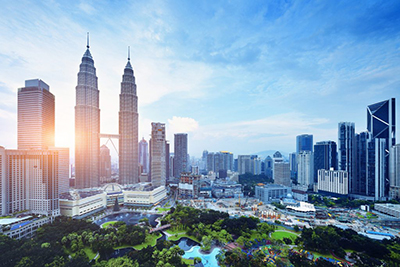
The distributor will the exclusive agent for the winery's'Vins de Vignerons'range, which includes the Côtes du Rhône Parallele 45 label as well as other cuvées from Crozes Hermitage, Cornas and St Joseph.
Jaboulet's Vins de Domaines wines such as its Hermitage La Chapelle, La Maison Bleue and Crozes Hermitage Domaine de Thalabert will also be handled by BLG.







